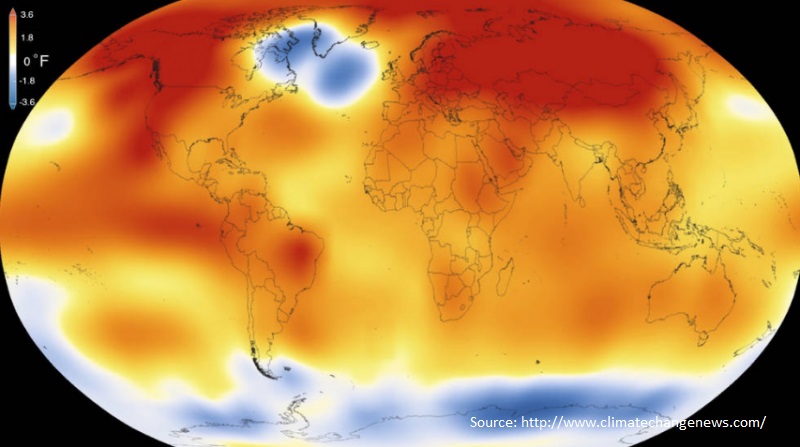GENEVA, 25 OCTOBER 2016 (CLIMATE HOME) —The most dangerous greenhouse gas has passed a new milestone, marking the beginning of a new paradigm for the planet and all of those who live upon it.
That was the stark warning of Petteri Taalas, secretary general of the World Meteorological Organisation (WMO), on Monday.
Releasing the WMO’s annual Greenhouse Gas Bulletin, Taalas confirmed that the average concentration of CO2 in the atmosphere had slipped above the landmark 400 parts per million for the first time.
Taalas said the unabated rise of global CO2 levels should refocus the minds of politicians and diplomats who have giddily heralded the rapid entry of the Paris climate agreement into law this year.
“The year 2015 ushered in a new era of optimism and climate action with the Paris climate change agreement. But it will also make history as marking a new era of climate change reality with record high greenhouse gas concentrations,” said Taalas.
The Mauna Loa and Cape Grim stations in Hawaii and Tasmania, which are used as barometers to measure the cleanest air on earth, both reported breaching the 400ppm milestone during 2016. The global atmosphere has not held this much CO2 for more than 650,000 years.
This landmark is entirely symbolic – 401ppm will be worse than 400ppm, although it is unlikely to attract the fanfare. However it coincided with the hottest year on record. Nasa confidently predicts 2016 will be even hotter.
Taalas used the moment to urge redoubled action to reduce carbon emissions: “The El Niño event has disappeared. Climate change has not.”
The breaching of the 400ppm mark was linked to the huge El Niño event that caused warmer conditions around the world last year. These shut down some of the world’s carbon sinks – processes which remove carbon from the atmosphere.
These sinks, such as forests and oceans, are vital in the fight against climate change. They currently soak up about 50% of humanity’s CO2 emissions. But the Greenhouse Gas Bulletin warned that they could become saturated by the rising CO2 levels, limiting their ability to help us keep the planet from warming to dangerous levels.
The level of CO2 is now 144% of the pre-industrial average. It is the most important greenhouse gas, contributing 65% of the current warming of the globe caused by greenhouse gases. Other major long-lived greenhouse gases – ie gases that persist in the atmosphere for many years – methane (CH4) and nitrous oxide (N2O).
Hydrofluorocarbons (HFCs), which were the subject of a major international deal agreed last week, are a relatively minor addition to warming, although increasing rapidly.
Taalas praised the HFC accord but warned that “the real elephant in the room is carbon dioxide, which remains in the atmosphere for thousands of years and in the oceans for even longer. Without tackling CO2 emissions, we can not tackle climate change and keep temperature increases to below 2C above the pre-industrial era”.
From the oil that transports us to the coal power that runs our factories, CO2 is the basis for much of the global economy, making it incredibly difficult to slow down emissions. The world’s climate diplomats will come back together next month in Marrakech to renew their efforts…..
Source: PACNEWS


